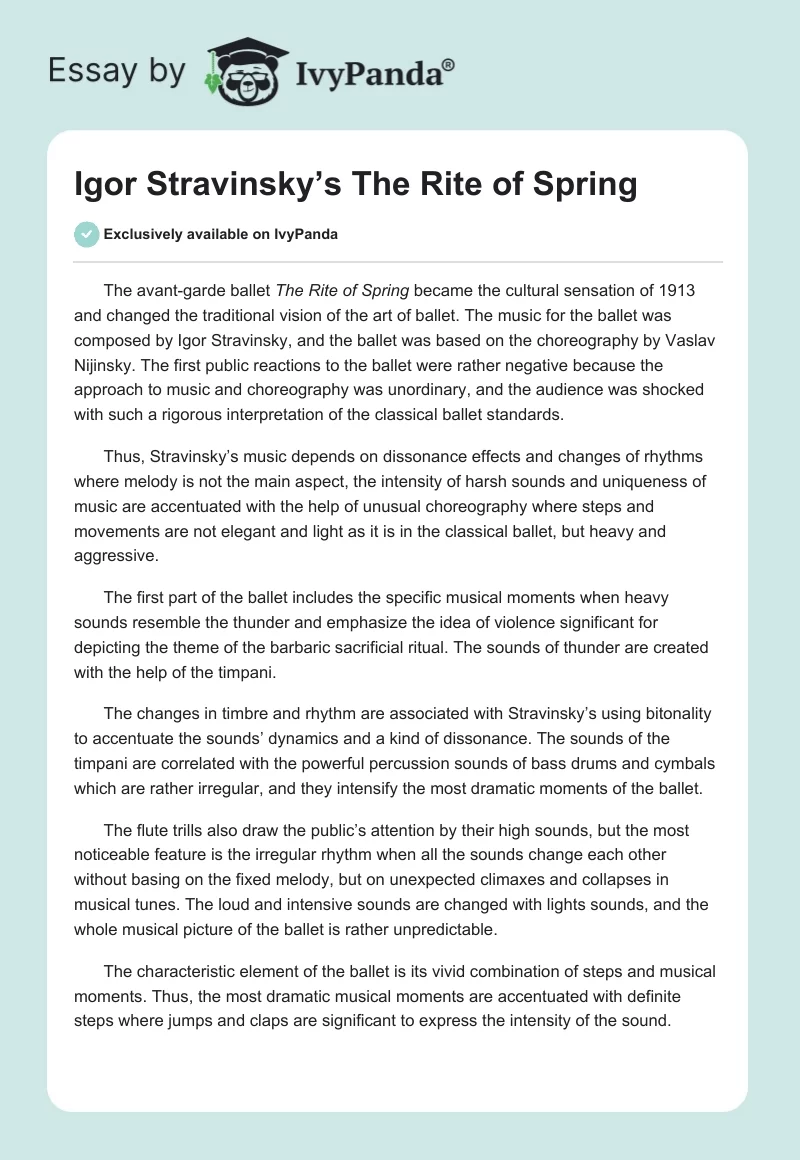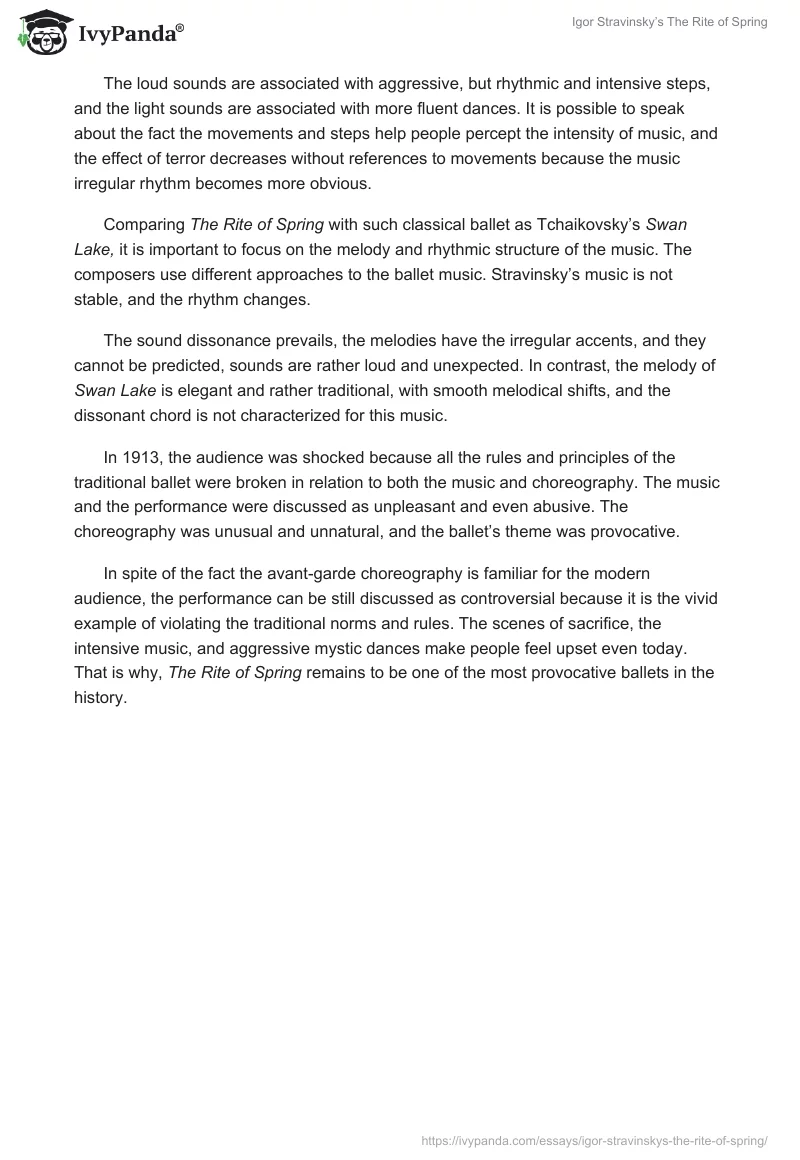The avant-garde ballet The Rite of Spring became the cultural sensation of 1913 and changed the traditional vision of the art of ballet. The music for the ballet was composed by Igor Stravinsky, and the ballet was based on the choreography by Vaslav Nijinsky. The first public reactions to the ballet were rather negative because the approach to music and choreography was unordinary, and the audience was shocked with such a rigorous interpretation of the classical ballet standards.
Thus, Stravinsky’s music depends on dissonance effects and changes of rhythms where melody is not the main aspect, the intensity of harsh sounds and uniqueness of music are accentuated with the help of unusual choreography where steps and movements are not elegant and light as it is in the classical ballet, but heavy and aggressive.
The first part of the ballet includes the specific musical moments when heavy sounds resemble the thunder and emphasize the idea of violence significant for depicting the theme of the barbaric sacrificial ritual. The sounds of thunder are created with the help of the timpani.
The changes in timbre and rhythm are associated with Stravinsky’s using bitonality to accentuate the sounds’ dynamics and a kind of dissonance. The sounds of the timpani are correlated with the powerful percussion sounds of bass drums and cymbals which are rather irregular, and they intensify the most dramatic moments of the ballet.
The flute trills also draw the public’s attention by their high sounds, but the most noticeable feature is the irregular rhythm when all the sounds change each other without basing on the fixed melody, but on unexpected climaxes and collapses in musical tunes. The loud and intensive sounds are changed with lights sounds, and the whole musical picture of the ballet is rather unpredictable.
The characteristic element of the ballet is its vivid combination of steps and musical moments. Thus, the most dramatic musical moments are accentuated with definite steps where jumps and claps are significant to express the intensity of the sound.
The loud sounds are associated with aggressive, but rhythmic and intensive steps, and the light sounds are associated with more fluent dances. It is possible to speak about the fact the movements and steps help people percept the intensity of music, and the effect of terror decreases without references to movements because the music irregular rhythm becomes more obvious.
Comparing The Rite of Spring with such classical ballet as Tchaikovsky’s Swan Lake, it is important to focus on the melody and rhythmic structure of the music. The composers use different approaches to the ballet music. Stravinsky’s music is not stable, and the rhythm changes.
The sound dissonance prevails, the melodies have the irregular accents, and they cannot be predicted, sounds are rather loud and unexpected. In contrast, the melody of Swan Lake is elegant and rather traditional, with smooth melodical shifts, and the dissonant chord is not characterized for this music.
In 1913, the audience was shocked because all the rules and principles of the traditional ballet were broken in relation to both the music and choreography. The music and the performance were discussed as unpleasant and even abusive. The choreography was unusual and unnatural, and the ballet’s theme was provocative.
In spite of the fact the avant-garde choreography is familiar for the modern audience, the performance can be still discussed as controversial because it is the vivid example of violating the traditional norms and rules. The scenes of sacrifice, the intensive music, and aggressive mystic dances make people feel upset even today. That is why, The Rite of Spring remains to be one of the most provocative ballets in the history.


